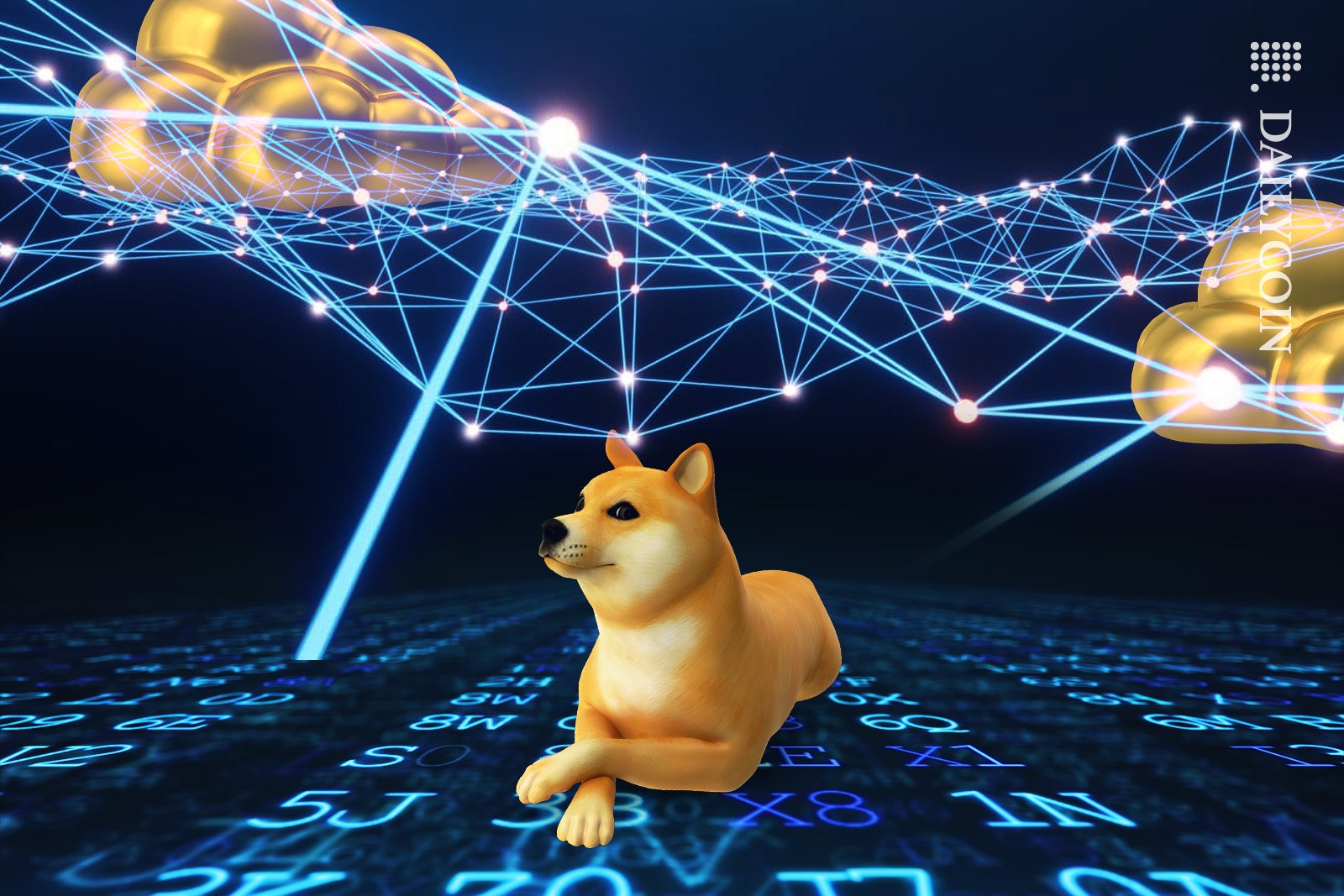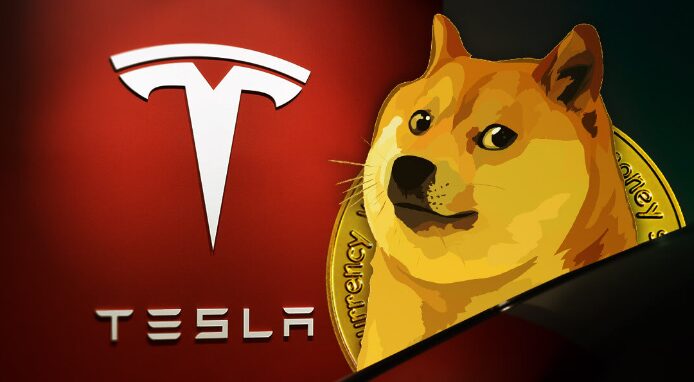
The Dogecoin Blockchain is one of the most iconic cryptocurrency networks in the digital asset market. Against all odds, Billy Markus and Jackson Palmer’s satirical joke stood the test of time and established itself as one of the biggest digital currencies in the crypto market.
However, despite Dogecoin’s status as one of the central pillars of the industry, The network has failed to attract high usage rates. For being such a key part of crypto history, it seems remarkable that Dogecoin is, in fact, something of a ghost-chain.
Why is the Dogecoin Blockchain’s network activity so low? Will Elon Musk integrate Dogecoin payments into his social media empire, or will DOGE always be nothing more than a simple meme coin?
Table of Contents
What Is the Dogecoin (DOGE) Blockchain?
Originally launched by software engineers Billy Markus and Jackson Palmer in December 2013, the Dogecoin blockchain was never intended to be anything more than a joke between friends.

The founders believed that the crypto space was taking itself too seriously. A lighthearted, open-source network based on the internet’s favorite Shiba Inu dog seemed to show the industry that cryptocurrency was, at best, not much more than magic internet money.
Fast forward eleven years later, and the Dogecoin blockchain is still running. People worldwide use the network to send and receive DOGE between wallets, while many more consider it a serious investment.
How Does Dogecoin Work?
Like Bitcoin (BTC) and Litecoin (LTC), Dogecoin is a Proof-of-Work blockchain. In this consensus mechanism, blockchain miners use computational power to solve complex problems and validate transactions on the network.
Sponsored
In exchange for verifying these transactions and creating new blocks, miners earn block rewards paid in DOGE.
Despite being created as a joke, the Dogecoin Blockchain was arguably more efficient than Bitcoin, thanks to its novel hashing function, Scrypt. The new algorithm still used the same SHA-256 hashing function, but its higher memory requirements and unlimited supply made it faster and more affordable.
In the early days of the Dogecoin blockchain, almost anyone could mine Dogecoin using a simple laptop computer. These days, however, Dogecoin mining companies operate enormous rigs that overpower basic mining pools and nodes, making it hard for small-timers to stay competitive.
The Dogecoin blockchain was originally forked from another early crypto meme coin called Luckycoin. This code originally distributed a random number of block rewards to miners, which made it inherently unstable as a long-term currency option.
The Dogecoin community moved away from this distribution model to preserve its long-term sustainability. Today, Dogecoin’s block time (the time it takes to create a new block) is around 1 minute, and miners receive a block reward of 10,000 DOGE.
The Dogecoin blockchain has no automatic token-burning functions to counteract these rewards, meaning that DOGE is an inflationary cryptocurrency.
What Can I Do on the Dogecoin Blockchain?
Compared with modern altcoins, the Dogecoin blockchain is relatively simple. DOGE is intended to be used as a basic currency, so the coin’s utility is mostly limited to transactions between Dogecoin wallets.
But that isn’t necessarily a bad thing. Dogecoin never promised to reinvent decentralized finance or change our lives using blockchain technology. All it ever wanted was to provide a fun way to send funds from one person to another.
Since then, DOGE has become a popular payment method. It can be used as a tipping currency in certain online communities. It was even an accepted payment currency for international brands like Tesla, with plans for purchases with DOGE to be re-instated.

Unlike Ethereum (ETH) and other Layer One chains like Solana (SOL), the Dogecoin blockchain doesn’t support smart contracts. Popular blockchain platforms like decentralized exchanges or NFT markets are virtually impossible.
However, that hasn’t stopped pockets of the Dogecoin community from finding ways around these limitations. Using Ordinals technology, some clever developers have successfully created DRC-20 tokens and Dogecoin Ordinals on the blockchain network.
While this technology is still largely experimental, it has helped to progress the potential utilities of the Dogecoin Blockchain.
Dogecoin is undoubtedly one of the biggest cryptocurrencies in the industry, both in terms of market capitalization and social standing.
However, the question needs to be asked: Is the network being used?
Is the Dogecoin Blockchain Actually Getting Used?
Despite its popularity, the Dogecoin blockchain is remarkably barren of activity, especially compared to other more modern and versatile networks.

While smart-contract-capable Layer Ones like Ethereum, Solana, and NEAR regularly see millions of transactions daily, Dogecoin can be found quietly humming along in the background with just over 335,000.
Of course, comparing a simple blockchain that only supports send-and-receive transactions with modern smart contract platforms is hardly a fair fight. Given the vastly superior range of utilities on Layer One chains, it’s hardly surprising that we would find more users and activity there.
With that in mind, how does the Dogecoin blockchain compare with its more direct rivals? According to Blockchain Explorer data, the Dogecoin blockchain handles fewer daily transactions than Bitcoin but still processes more activity than comparative networks like Litecoin or Bitcoin Cash.
While the Dogecoin blockchain’s network activity falls well short of modern Layer One chains, it performs remarkably well against other basic transactional chains.
Will 𝕏 Use The Dogecoin Blockchain?
One of the biggest rumors circulating in the crypto space for years is the belief that Elon Musk will one day integrate Dogecoin payments into the 𝕏 social media platform.
Elon Musk has long been a staunch supporter of Dogecoin, once tweeting that his company SpaceX would “put a literal Dogecoin on the literal moon.”
Speculation reached a fever pitch shortly after Elon Musk took over Twitter headquarters when a Dogecoin symbol briefly replaced the company’s iconic bird logo.
Since then, Musk has been vehemently pursuing Money Transmitter Licenses across the U.S.. It is widely believed that he intends to incorporate Dogecoin payments into the social media platform.
Dogecoin Blockchain Pros and Cons
The Dogecoin blockchain is a key part of crypto’s history, but is it all it’s cracked up to be? Let’s recap the pros and cons of the Dogecoin blockchain.
Pros
- Cheap Transactions – Unlike Proof-of-Work rivals like Bitcoin, Dogecoin blockchain transactions only cost a fraction of a cent, making them far more accessible to users.
- Massive Support – Dogecoin is widely recognized even outside the crypto community and is supported by some of the biggest players in the financial world, like Elon Musk.
- Growing Utilities – The advent of Dogecoin ordinals and DRC-20 tokens herald the dawn of new use cases on the network, which may bring more users and network activity.
Cons
- Outclassed by modern networks – Dogecoin may be iconic, but technically speaking, it’s starting to be a little outdated. Modern Layer Ones are far better suited to providing infrastructure and services to an evolving society.
- Scalability limitations – At max capacity, Dogecoin can theoretically handle up to 33 transactions per second. This kind of throughput simply cannot support the high volume of users if Dogecoin is to truly be adopted by millions of daily users.
On the Flipside
- Dogecoin is, at its heart, a meme coin. When Markus and Palmer created DOGE, they had no idea it would become such a sensation.
Why This Matters
Understanding the use cases and limitations of the Dogecoin blockchain will help you make more informed decisions in the crypto market.
FAQs
You can buy Dogecoin (DOGE) on top cryptocurrency exchanges like Binance or Coinbase.
DOGE in its purest form lives only on the Dogecoin blockchain, however, wrapped versions of Dogecoin are also available on other networks like Ethereum.
DOGE’s all-time high is $0.73 USD, recorded on May 8, 2021.
